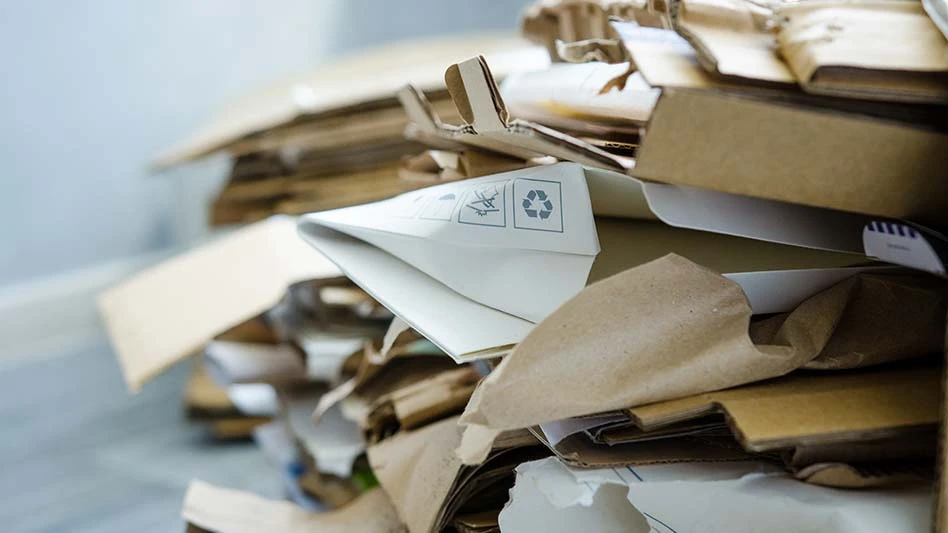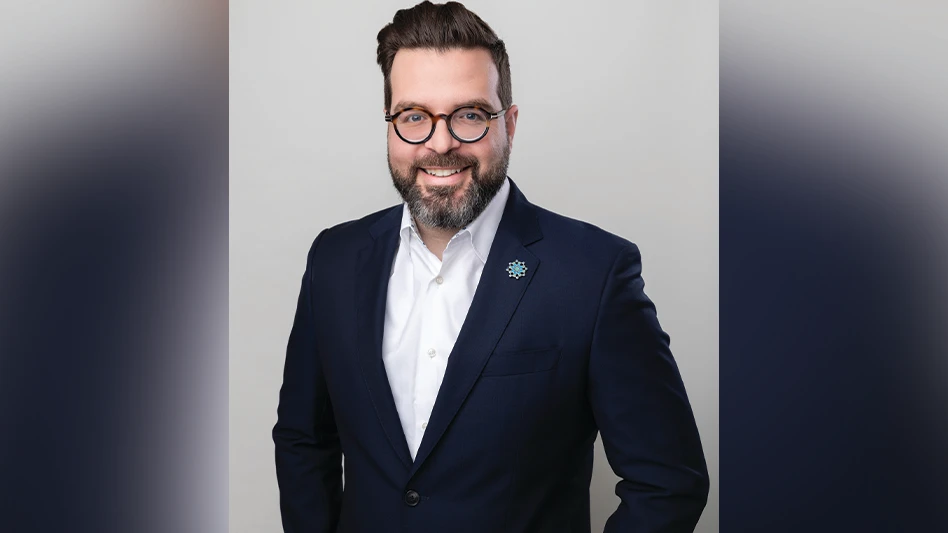
Photo by Candace Nelson

KW Plastics calls itself the world’s largest recycler of high-density polyethylene (HDPE) and polypropylene (PP). Director of Market Development Stephanie Baker says the Troy, Alabama-based company handles roughly 250,000 tons of HDPE and the equivalent amount of PP annually, which is about 8 million to 9 million containers per day. It has achieved its status in part by having a long-term commitment to the market, working with its suppliers and customers to understand their commitments, too, she says. KW recognizes that commitment in part by continually investing in its operations.
“We believe in reinvesting in ourselves, being innovative and never sacrificing quality—be that in our product or our service,” Baker says.
Proprietary processing
For KW, continually investing in processing innovations helps set it apart from other recyclers. Improvements the company has made in the last five years include the addition of a wash line for PP and two extruders, Baker says.
“We have a proprietary processing system with our wash lines that are designed in-house and built-in house,” she adds. “Our wash line technology is exclusive.” KW has seven high-capacity wash lines, each of which is capable of processing 30,000 pounds per hour, she says.
The company operates a wastewater treatment plant to manage the water from its production process, investing to double its wastewater treatment capacity in recent years.

KW also operates seven 160-millimeter twin-screw extruders and 12 8-inch single-screw extruders, each with custom screws and gear boxes designed to the company’s specifications.
“Our own proprietary processing allows us to run at higher capacities while maintaining strict quality controls,” Baker says.
Despite all these recent investments in its processing capacity, KW still is expanding. Baker says the company will add another wash line before the second quarter of the year is over and has plans to add two more extruders.
“We have strengthened our infrastructure to be ready for additional wash and extrusion lines to be installed should we see available material or demand,” she adds.
Additional enhancements
Baker says KW’s 40,000-square-foot machine and fabrication shop helps to support the company’s growth, while its 50,000-square-foot maintenance facility ensures adequate spare parts and equipment are inventoried to help minimize downtime.
KW has invested in other areas of its operation, as well, including adding automation to its gaylord box station. Baker says this investment “boosted efficiency in assembling, filling, weighing and ultimately loading our product for customer delivery.
In late January, the company was in the process of completing an on-site research and development lab that Baker says will focus largely on production and resin applications.KW also has added storage silos for flake and pellets, including four large blending silos that are mounted on load cells. In total, KW has 100 million pounds in silo capacity.
“Our increased capacity, which will bring our total to 750 million pounds of annual wash and extrusion availability, has been a direct response to the announced investments from the waste collectors and MRF owners,” Baker says. “We want to be ready to supply the commitments from brand owners to use more PCR [postconsumer resin].”
Out of the two types of plastics it recycles, Baker says KW sees PP as having the most growth potential over the next three to five years. “We already see the demand for more quality supply of PP recycled resin, and we see significant and strategic investments focused on growing PP access, such as The Recycling Partnership’s work through their Polypropylene Recycling Coalition,” she says.




Here, there and everywhere
KW purchases HDPE and PP scrap in the form of bales from material recovery facility (MRF) operators and other scrap collectors throughout North America, the Caribbean and sometimes Europe, Baker says.
The company sells its recycled resins to U.S. companies that use it in a variety of applications, including personal care, automotive, agriculture, construction, pipe, paint and coatings recreation and packaging applications. Baker says the packaging and automotive sectors are KW’s biggest consumers.
According to the company’s website, “You’ll find our HDPE and PP resins in virtually every home in the U.S. Take a look under the kitchen sink, on the bathroom shelves, in the laundry room, out in the garage, in the garden or under the hood of your car. Products made with KW resin touch lives on a daily basis.”
“Many of our resin products are certified and we hold two FDA [Food and Drug Administration] letters of nonobjection,” Baker adds.
The company says it’s the only recycler to hold UL Certification and the first recycler to receive the Ford Q1 Supplier Award, an honor that was bestowed in 1994, just one year after KW Plastics Recycling Division was founded.
Baker says market conditions as of the start of 2023 are difficult as virgin resin prices have plunged in recent months. While the situation has caused many of KW’s end markets to compromise their commitments to use PCR, she adds, “We have continued to adjust pricing and our capacities to help our customers’ immediate demand while looking ahead to ensure we are ready to help them meet their supply commitments.”
Important issues
Baker says the plastics recycling industry continues to face stagnate supply even as processing capacities increase.
“For years, we have heard that capacity is a hindrance to growing the market,” she says. “Our industry, in large part to our investments, has never seen more new capacity, and yet we can’t seem to grow the recycling rate.”
The skepticism around plastic recycling could be one factor that is working to keep the recycling rate low for the material. Recently, Greenpeace USA issued a report titled “Circular Claims Fall Flat Again,” claiming that most plastic generated in the U.S. cannot be recycled.
According to the Greenpeace report, no type of plastic packaging in the U.S. meets the definition of recyclable used by the Ellen MacArthur Foundation’s New Plastic Economy (EMF NPE) Initiative, which calls for a 30 percent threshold “across multiple regions, collectively representing at least 400 million inhabitants.”
The report says the recycling rates for polyethylene terephthalate (PET) and HDPE fall well below the EMF NPE threshold, achieving reprocessing rates of 20.9 percent and 10.3 percent, respectively. However, according to the “2020 U.S. Post-consumer Plastic Recycling Data Report,” the PET bottle recycling rate is 27.1 percent and the HDPE bottle recycling rate is 28.8 percent.
A number of media outlets featured headlines referring to the “myth” of plastic recycling, citing the Greenpeace report.
“Most recently, we have seen a gross defamation and spreading of misinformation regarding plastics recycling and its valuable role as a sustainable material and system,” Baker says. “The strategic play to leverage an emotional, global view of plastics has threatened the credible efforts of our domestic plastics recycling industry. The ill-intentioned efforts in hopes to foster plastics bans have been exasperating and counterproductive to our industry’s commitment to provide sustainable and circular solutions, particularly to packaging.”
Baker adds, “The access to and collection of materials has always been the controlling factor to recycling rates, not the capacity. As more capacity is needed, we are confident our industry will make it available.”
KW, for one, has shown it’s committed to doing just that.

Explore the Spring 2023 Plastics Recycling Issue
Check out more from this issue and find your next story to read.
Latest from Recycling Today
- Hyundai says it will make steel in the US
- APR announces Recycling Leadership Award winners
- Glass Half Full opens glass recycling facility in Louisiana
- AmpUp partners with Roundtrip EV
- Global Recycling Day event supports Pittsburgh school's recycling efforts
- President signs executive order on critical minerals
- Registration opens for Scrap Expo 2025
- Toyota opens ‘circular factory’ in UK





